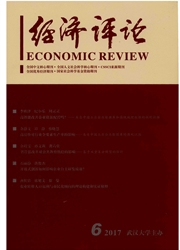

 中文摘要:
中文摘要:
本文扩展了包含农业和工业部门的发展经济学模型,在具有普适意义的理论框架中解释了劳动收入份额的演变规律及FDI对劳动收入份额的影响机制,并利用1994-2007年中国省市面板数据展开实证研究。在控制省市固定效应和其他相关经济社会变量后,本文发现FDI对劳动收入份额的影响路径呈稳健的倒U型非线性曲线,经历了就业效应和技术效应的交替主导,东中西三大区域及增长极、直辖市空间范围内的影响路径表现出典型的地域性差异,适宜技术研发、市场整合及相应的政策激励有助于抑制FDI技术效应对劳动收入份额的负面冲击,缓解严峻的收入分配差距。
 英文摘要:
英文摘要:
An development economics model including agricultural and industrial sectors are extended in this article. The evolution trend of labor share and how FDI influences it are explained in a generally applicable theory framework and empirical research is made by provincial panel data of China during 1994 - 2008. Provincial fixed effects and other economic and social variables are controlled and it is found that effect of FDI on the labor share makes a dynamic evolution path of inverted "U - type" ,which takes the alternative lead between the Employment Effects and Labor Productivity Effects. There are typical regional differences of evolution path among three regions, growth poles and municipalities. Appropriate technology development, market integration and corresponding policy incentives can help inhibit the negative effect and alleviate severe income gap.
 同期刊论文项目
同期刊论文项目
 同项目期刊论文
同项目期刊论文
 期刊信息
期刊信息
